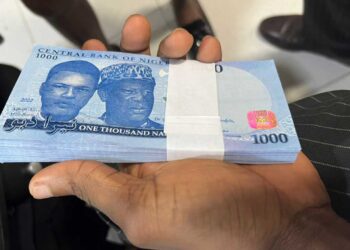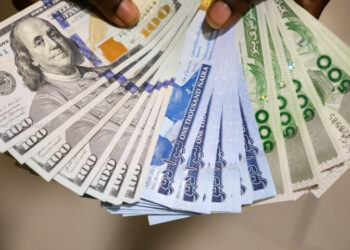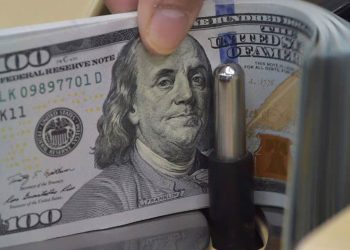The Nigerian naira has dropped to its lowest level since March, trading at N1,577 per U.S. dollar on Monday, despite efforts by the Central Bank of Nigeria (CBN) to stabilize the currency. This decline marks the fifth consecutive day of the naira weakening against the dollar, driven by high demand for the U.S. currency and geopolitical concerns.
Factors Influencing the Decline
Several factors are contributing to the naira’s recent downturn. Key among them is the heightened demand for U.S. dollars, spurred by corporate transactions and the need for foreign currency for overseas travel. This demand persists despite the CBN’s interventions, including dollar sales totaling $122.7 million to local currency dealers on July 10-11. These measures have proven insufficient to balance the high local demand for the dollar.
Additionally, the U.S. dollar has strengthened on the back of increased expectations for interest rate reductions by the Federal Reserve, further pressuring the naira. The U.S. dollar index has seen slight increases, trading near its April low, supported by disinflationary trends in the U.S. economy and market speculation about a potential rate cut by the Fed in September.
Economic Challenges and Inflation
Nigeria’s economic landscape remains challenging, with headline inflation reaching a 28-year high. According to the National Bureau of Statistics (NBS), the inflation rate rose from 22.79% in June 2023 to 34.19% in June 2024, reflecting an 11.4 percentage point increase year over year. This persistent inflation has prompted the CBN to maintain a hawkish stance, raising interest rates to curb inflation and stabilize the market.
Geopolitical developments, particularly in the United States, have also impacted the naira. Recent rumors of an assassination attempt on former President Donald Trump and the subsequent speculation about his potential re-election have influenced market sentiment. A second term for Trump is expected to lead to more trade protectionist policies, potentially resulting in higher inflation and sustained higher interest rates, thereby boosting the dollar’s value.
Outlook for the U.S. Dollar
Market focus is now on upcoming U.S. retail sales data, which could provide further insights into the potential slowdown of the U.S. economy. The CME FedWatch Tool indicates an 86% probability of a 25-basis-point rate cut in September, suggesting that a rate reduction remains likely. The U.S. 10-year benchmark rate has also declined to its lowest level since April, currently at 4.20%.
Technical indicators for the dollar index, such as the Relative Strength Index (RSI) and Moving Average Convergence Divergence (MACD), are approaching oversold levels, with the DXY index trading below its 200-day Simple Moving Average (SMA). These factors point to continued volatility and uncertainty in the currency markets.
Bottom Line
The naira’s recent decline underscores the complex interplay of domestic economic challenges and international geopolitical developments. As Nigeria grapples with high inflation and increased demand for foreign currency, the effectiveness of the CBN’s interventions and the broader impact of global market trends will remain crucial in shaping the naira’s trajectory in the coming months.











